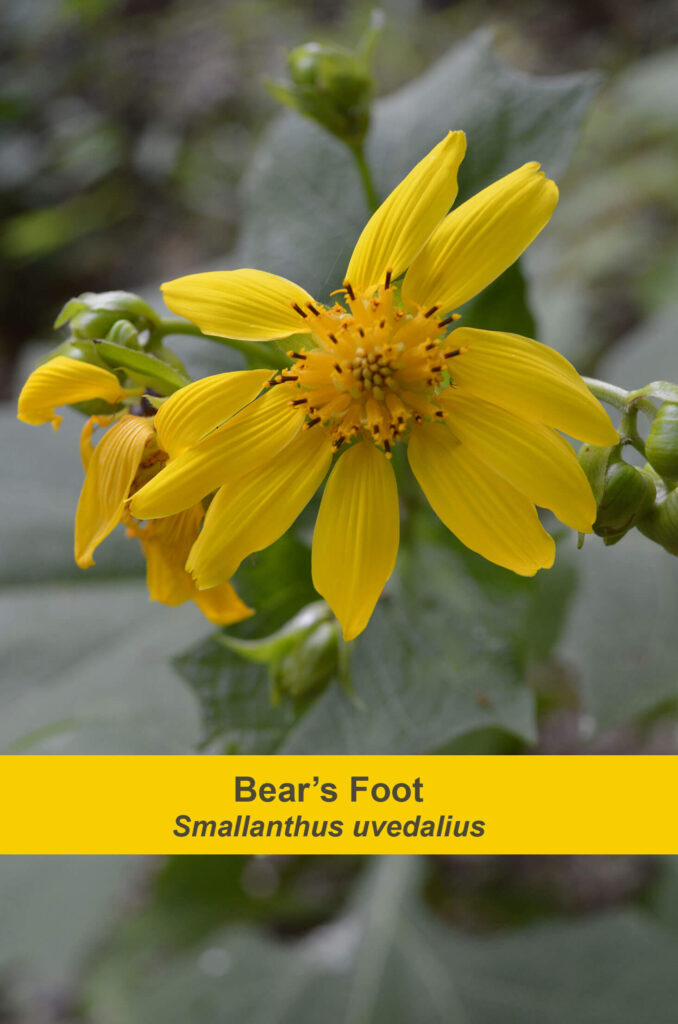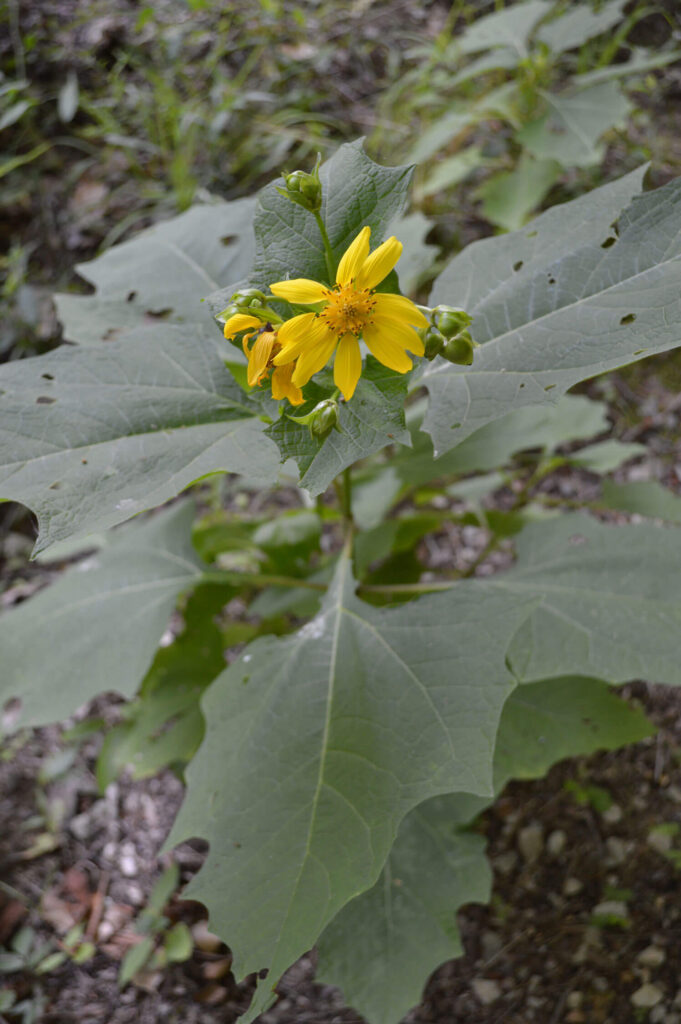Native to the eastern United States, up to Michigan, and across to Texas and Kansas (see the distribution map), this perennial plant can be found in forest gaps, along the edges of fields and forests, in thickets, bottomlands, and grasslands. It can grow in full sun or part shade and tolerates a wide range of soil moisture conditions.
Bear’s Foot Plant Description
Bear’s foot (Smallanthus uvedalius (L.) Mack. Ex Small (synonym: Polymnia uvedalia)) can grow to be eight to ten feet tall. It has huge leaves – sometimes 10 to 12 inches in diameter. The leaves are lobed (3-5 lobes) and hairy. Leaves are arranged oppositely on the stalk.
This native plant is in the aster family, so the flowers resemble miniature sunflowers. The blooms are about 2-3 inches in diameter and are composed of two types of flowers: bright yellow ray flowers encircling disk flowers. Only the ray flowers (the yellow “petals”) produce seeds. There are 7 to 13 ray flowers surrounding the disc flowers.
The flowers bloom in July through September and can be found clustered at the end of the tall plant stalks. The stem of the plant is hollow and smooth.
Light Requirements
Bear’s foot grows in full sun to part shade.
Water Requirements
This plant requires low to medium soil moisture but can grow in various soil moisture conditions.

Propagation of Bear’s Foot
Seeds should be sown in fall or spring. I found one mention of someone propagating the plant by basal cuttings, but it is unclear when to do so and how successful this will be.
Fun Facts
Some people think the outline of the large leaves resembles the print of a bear’s paw, hence one of the common names of this plant, bear’s foot.
The genus Smallanthus was named for American botanist John Kunkel Small (1869-1938). This plant is the only one in the genus in the U.S.
This plant is also known as Hairy Leafcup or Yellow Leafcup. The leaves have long, winged petioles; the leaves form a small cup around the stem, hence the source of one of the common names for this plant – leafcup.
Wildlife Uses
Many pollinators are attracted to the flowers and use their nectar. Bees, wasps, and flies have been spotted using the plant. Birds eat the seeds. Bees overwinter in the hollow stems.

Additional Resources
- http://plants.usda.gov/core/profile?symbol=SMUV
- http://sweetgum.nybg.org/vh/specimen_list.php?Where=DetFiledAsTaxonLocal+CONTAINS+%27Smallanthus+uvedalia%27
- http://oak.ppws.vt.edu/scott/weed_id/smauv.htm
- http://www.fs.fed.us/wildflowers/plant-of-the-week/smallanthus_uvedalius.shtml
- http://www.discoverlife.org/mp/20q?search=Smallanthus+uvedalius
